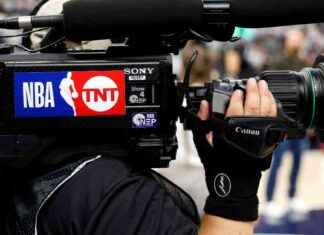Say you were tasked with writing a manual on how to build a Yankees champion based on the previous 27. Wouldn’t the very first chapter revolve around finding lefty power – and plenty of it?
In 2017 and for the near future – unless your pinstriped watch is set to Bryce Harper time – the Yankees do not project to have an abundance of lefty power swinging for the short right-field porch.
The best hope now and for the next few years is first baseman Greg Bird, and the Yankees are worried enough about the condition of his surgically repaired shoulder Hal Steinbrenner agreed to raise the payroll again to fit in Chris Carter – a righty masher, if you are scoring at home.
General manager Brian Cashman told me, “I think we have enough lefty hitting.” And the Yankees could put six lefties into a lineup. But of that group, only Bird and perhaps Didi Gregorius project much power threat.
“The power is not prevalent from the left side,” Cashman agreed. “That is the way the dominoes have shaken out.”
The Yankees GM said this has not been a philosophical alteration, though he acknowledged the swarm of defensive shifts has hurt the overall impact of a pull-heavy lefty and made finding such types “not the priority it once was.” Indeed, this was once the time of year the Yankees might sign a lefty homer threat such as Eric Chavez or Raul Ibanez. That kind of player was available in Pedro Alvarez, but the Yankees preferred Carter because they intend to have Matt Holliday as the everyday DH and wanted a righty counter-balance to Bird.
The Yankees’ best regular lefty bats against righty pitching last year were Carlos Beltran and Brian McCann. Both were traded. Mark Teixeira retired. In the same time frame, the Yankees prioritized getting the best prospects possible when they dealt Aroldis Chapman and Andrew Miller. The key bats in return (Gleyber Torres and Clint Frazier) are both righties, as are Aaron Judge and Gary Sanchez. So the future leans rightward, too.
Sanchez actually had a 1.093 OPS against righties in his starry cameo last year. Carter (.803) and Holliday (.776) had a better OPS against righties in 2016 than any current Yankees lefty hitter – and Holliday is known for strong power to right-center. Still, that underscores the weakness of the current Yankees lefty group. Gregorius hit 16 homers vs. righties, but had just a .283 on-base percentage. Switch-hitter Chase Headley provides little power from a power position at third, managing just a .399 slugging percentage versus righties – remember that is with half his games at Yankee Stadium.
The best returning lefties are Brett Gardner (.745 OPS vs. righties) and Jacoby Ellsbury (.744), who ranked 83rd and 84th in OPS vs. righties among those with at least 200 plate appearances. Aaron Hicks was brought in to be a force against lefty pitching and was atrocious (.484 OPS), making his .691 OPS against righties appealing only by comparison.
This is why there is pressure on Bird. He had a .915 OPS against righties in his impressive late-season debut in 2015 before missing all of 2016 after needing shoulder surgery. He did not hit well or play first base in the Arizona Fall League, which is why the Yankees felt they needed insurance with Carter.
“We want [Bird] to emerge and approach the ceiling he possesses,” Cashman said. “We would bet on him. Two years ago, he was the best prospect in our system, and that included Gary Sanchez. He should work out. He has a great deal of ability. But if he doesn’t work out, we will find something that does. That is just the nature of the beast.”
In some ways, the Yankees have been ebbing toward this moment since the decision to let Robinson Cano go after the 2013 season and bring in Beltran, Ellsbury and McCann. Cano remains one of the majors’ best hitters and a destroyer of righty pitching. Only Ellsbury remains a Yankee. Meanwhile, the second baseman is Starlin Castro, a righty who hit 16 homers against righties with just a .297 on-base percentage.
The Yankees probably would be better served with a lefty-hitting utility infielder rather than the righty Ronald Torreyes, but Cashman said it is not a point of emphasis to find one – prospect Tyler Wade ultimately might grow into that role.
“There is no think-tank, philosophical change to get away from lefty power,” Cashman said. “It is how it has shaken out as we tried to upgrade each individual position.”
Still, the result is a Yankees team with as little predictable lefty power as any in recent memory. So, if you are setting that watch, Harper can be a free agent after the 2018 campaign.
Our editors found this article on this site using Google and regenerated it for our readers.





